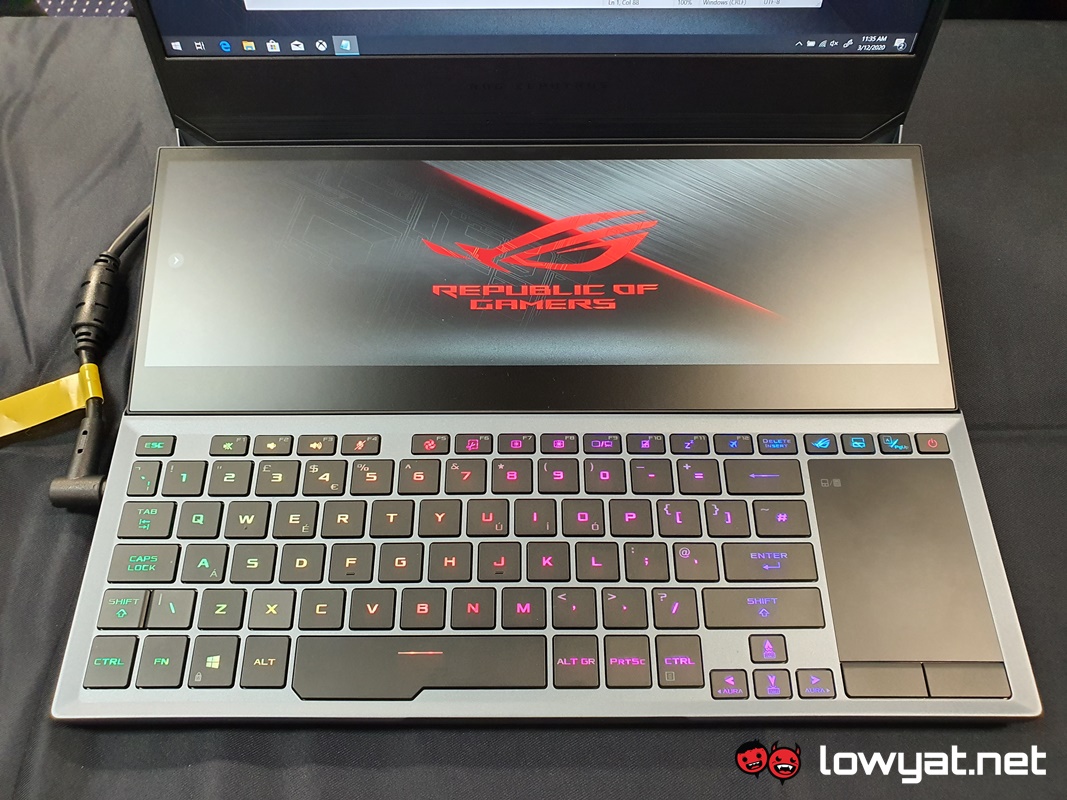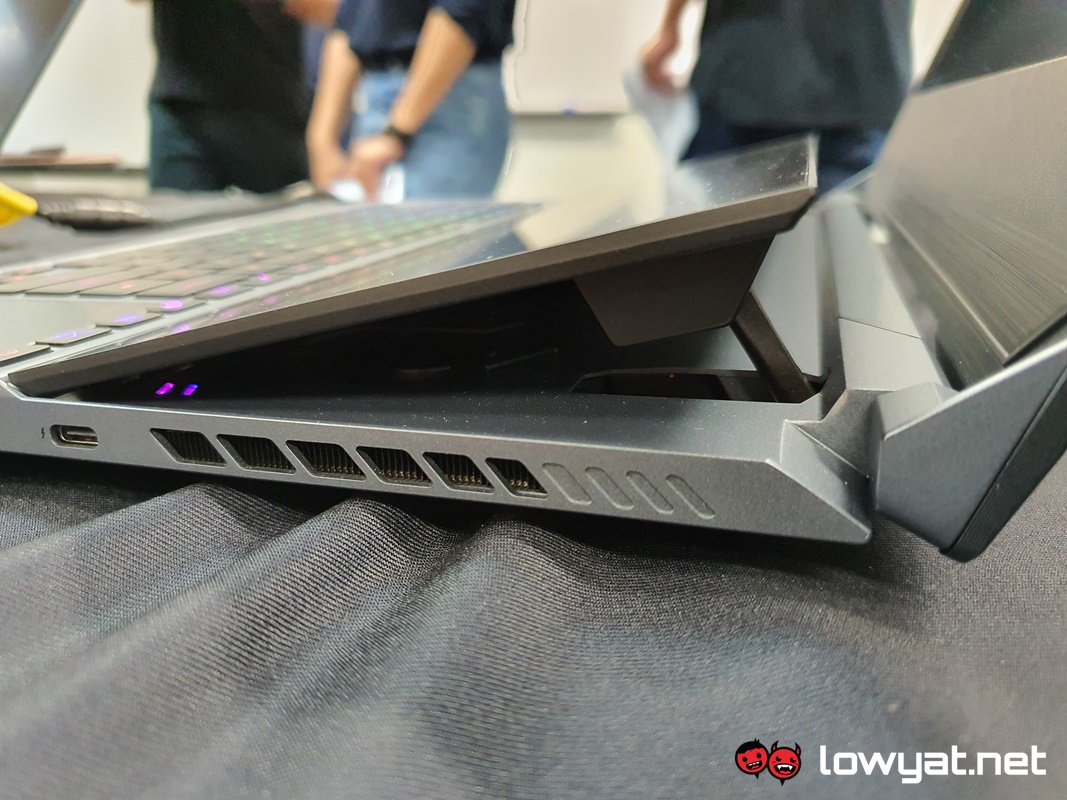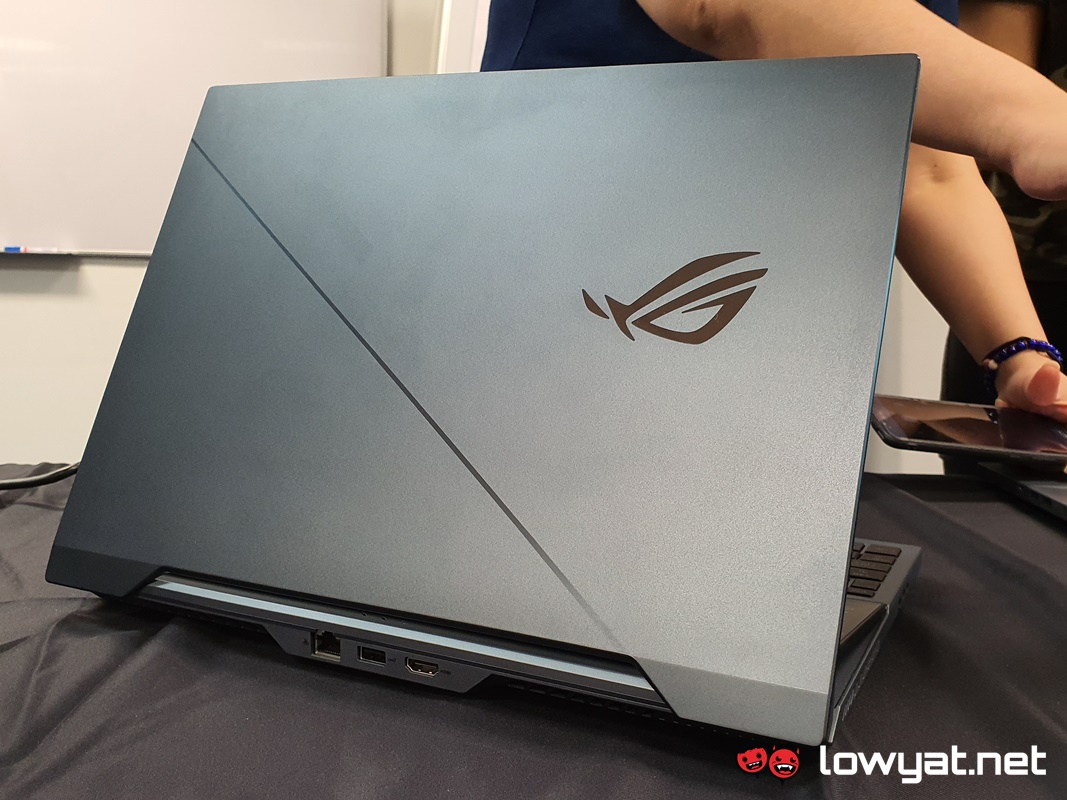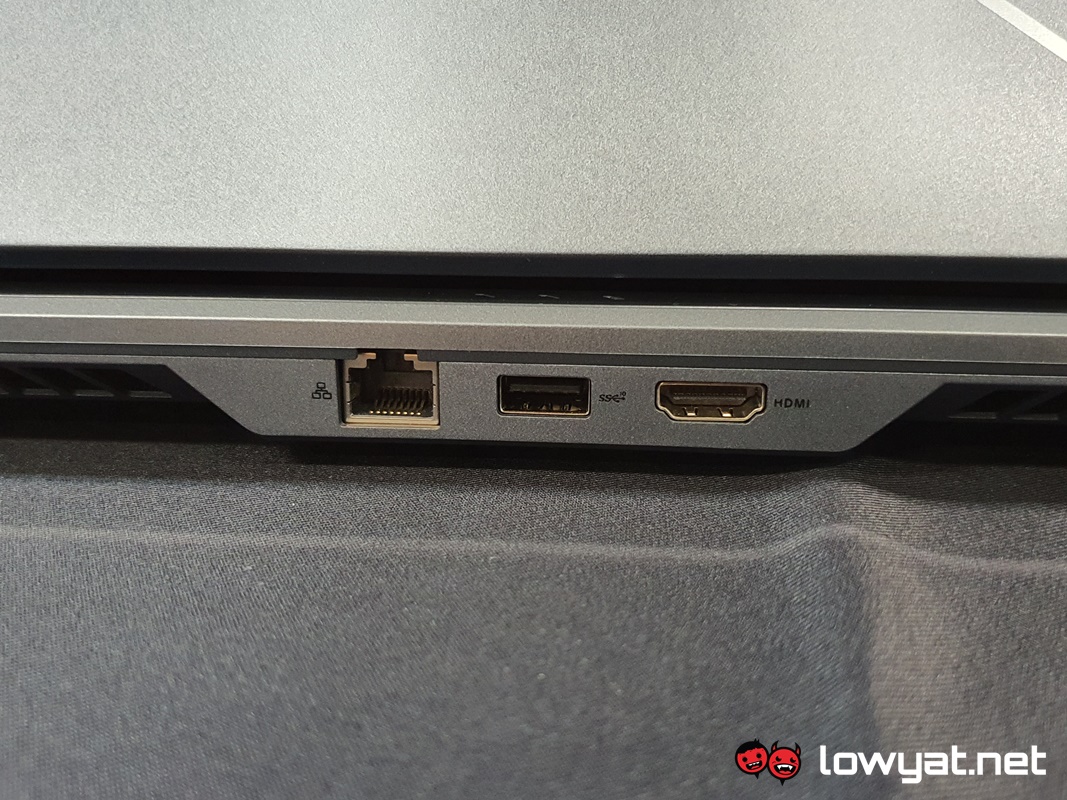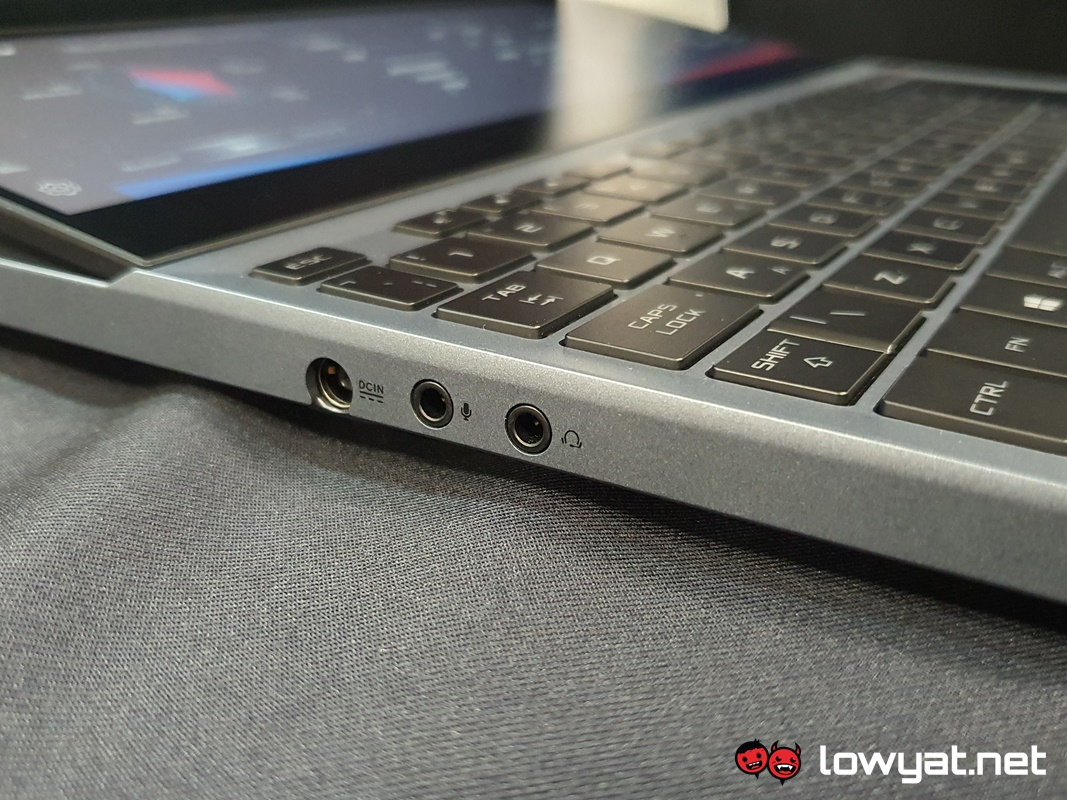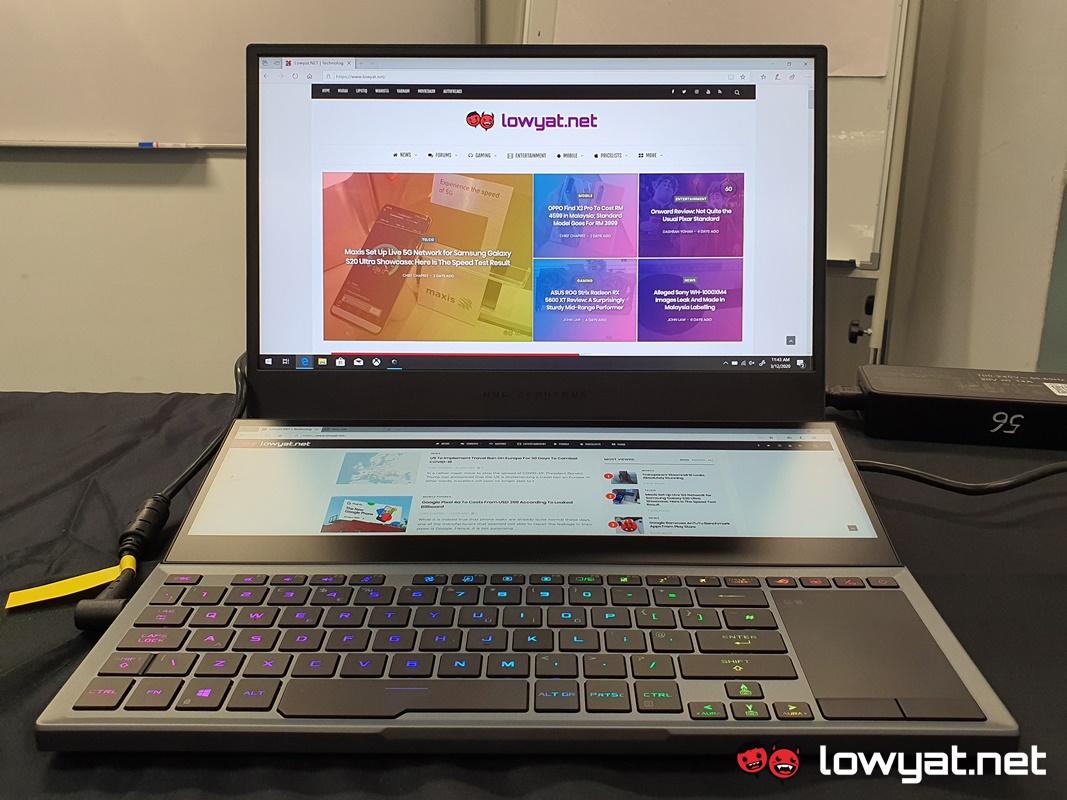Like the original Zephyrus design, the Zephyrus Duo 15 comes with all the usual accoutrement; there’s the keyboard and trackpad cum touch-based numpad. Crammed into the bottom half of the base. Personally, I’ve never been a fan of the concept of having the keyboard so far down and it makes the typing experience a little cramped. But in this particular instance, there’s a method to its madness. As I wrote in an earlier article, the Zephyrus Duo 15 has clearly taken a page out of the ZenBook Pro Duo with its 14-inch secondary display, and to be frank, it’s a good use of the once vacant space that occupied the top half of the notebook.
The Zephyrus Duo 15 is a new machine, meaning that it requires a new design. Compared to the early design of the original Zephyrus, the bottom of this laptop doesn’t elevate the machine at an angle anymore to provide ventilation. Instead, the secondary touch display tilts at an angle when the main display is fully open. ASUS says this change in design allows the Zephyrus Duo 15 to suck in considerably more air. Allowing for 30% better ventilation than the previous design. Of course, part of the “better ventilation” design can also be boiled down to ASUS’ use of Thermal Grizzly’s Conductonaut liquid metal compound. That has been proven to be more effective than your typical thermal paste, but to be fair, a full test will be necessary to confirm this.
On another note, the primary 15.6-inch display can either be a Full HD panel with a 300Hz refresh rate, or a 4K Adobe RGB display with a 60Hz refresh rate. Regardless of your choice, both panels are Pantone Validated and will have a GPU switch that enables it to toggle between the on-board G-SYNC module and NVIDIA’s Optimus mode. Beneath the hood, the Zephyrus Duo 15 is rocking a 10th generation Intel Core i9-10980HK, a 16GB DDR4-3200MHz RAM base, and an NVIDIA GeForce RTX 2080 Super. Other specifications include an ESS Sabre DAC for Hi-Res Audio, although, given my brief experience with it, the speaker didn’t quite perform as well as I expected.
The availability of ports is debatable and oddly placed; the spine of the Zephyrus Duo 15 houses a LAN port and HDMI 2.0b output, as well as a lone USB 3.0 port. On the right side, you find the 3.5mm headphone and microphone jacks sitting right next to the power port, while on the other side, a USB-C port sits alone. Of course, given its status as a gaming notebook, the Zephyrus Duo 15 comes with a backlit RGB keyboard, by way of ASUS’ Aura Sync RGB software.
At the time of writing, ASUS still hasn’t released local pricing and availability. Given the current COVID-19 pandemic, the lack of information is understandable. In any case, I definitely look forward to being able to see how the machine performs as a daily driver.
